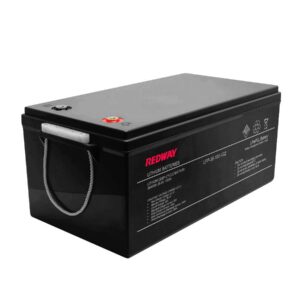How Long Do Solar Street Light Batteries Last?
The lifespan of solar street light batteries is a critical factor in determining the overall longevity and efficiency of these lighting systems. Typically, high-quality lithium-ion batteries can last between 5 to 10 years, while lead-acid batteries generally last around 2 to 4 years. Understanding these aspects can help you make informed decisions when selecting solar street lighting solutions.
What is the lifespan of solar street light batteries?

Solar street light batteries vary in lifespan based on their type and quality. Generally:
- Lithium-ion Batteries: These are known for their longevity, typically lasting between 5 to 10 years.
- Lead-Acid Batteries: These have a shorter lifespan, usually around 2 to 4 years.
| Battery Type | Typical Lifespan |
|---|---|
| Lithium-ion | 5–10 years |
| Lead-acid | 2–4 years |
How do different battery types affect lifespan in solar street lights?
The type of battery used significantly influences the overall lifespan of solar street lights:
- Lithium-ion Batteries: More efficient and capable of handling more charge cycles (approximately 2000–3000 cycles), making them ideal for long-term use.
- Lead-Acid Batteries: Less expensive but have fewer charge cycles (around 500–600 cycles) and are more susceptible to performance degradation over time.
| Battery Type | Charge Cycles | Lifespan |
|---|---|---|
| Lithium-ion | 2000–3000 cycles | 5–10 years |
| Lead-acid | 500–600 cycles | 2–4 years |
What factors influence battery longevity in solar street lights?
Several factors affect how long solar street light batteries will last:
- Temperature: Extreme temperatures can negatively impact battery performance and lifespan. High heat can lead to overcharging, while cold temperatures can reduce capacity.
- Quality of Components: Higher quality batteries tend to last longer due to better materials and manufacturing processes.
- Charging Cycles: The number of times a battery is charged and discharged affects its overall lifespan; deeper discharges can shorten life.
| Factor | Impact on Lifespan |
|---|---|
| Temperature | Extreme heat or cold reduces performance |
| Quality of Components | Higher quality leads to longer life |
| Charging Cycles | Frequent deep discharges shorten lifespan |
How can proper maintenance extend battery life?
Proper maintenance practices can significantly enhance the longevity of solar street light batteries:
- Regular Inspections: Check for any signs of wear or damage periodically.
- Cleaning Solar Panels: Ensure panels are free from dirt and debris for optimal energy absorption.
- Battery Monitoring: Regularly check the health of the batteries and replace them when necessary.
| Maintenance Practice | Description |
|---|---|
| Regular Inspections | Identify issues early |
| Cleaning Solar Panels | Optimize energy absorption |
| Battery Monitoring | Ensure optimal performance |
How do environmental conditions impact battery life in solar street lights?
Environmental conditions play a crucial role in determining how long solar street light batteries will last:
- Humidity Levels: High humidity can lead to corrosion, particularly in lead-acid batteries.
- Exposure to Elements: Batteries that are not properly shielded from rain or extreme weather may degrade faster.
- Location: Areas with high pollution levels may also negatively impact battery performance over time.
| Environmental Condition | Impact on Battery Life |
|---|---|
| Humidity Levels | Can cause corrosion |
| Exposure to Elements | Increases risk of damage |
| Location | High pollution may degrade performance |
How often should solar street light batteries be replaced?
Replacement frequency depends on the type of battery used:
- Lithium-ion Batteries: Should be checked every 5 years, with replacement recommended if performance declines significantly.
- Lead-Acid Batteries: Typically need replacement every 2 to 4 years depending on usage and environmental conditions.
| Battery Type | Replacement Frequency |
|---|---|
| Lithium-ion | Every 5 years (as needed) |
| Lead-acid | Every 2–4 years |
Industrial News
The market for solar-powered lighting solutions continues to grow as municipalities seek sustainable alternatives to traditional lighting systems. Recent advancements in lithium-ion battery technology have significantly improved the reliability and longevity of solar street lights, allowing them to perform efficiently even under challenging environmental conditions. As cities increasingly prioritize eco-friendly infrastructure, manufacturers are innovating to enhance performance while reducing costs.
Expert Views
“Understanding the lifespan and maintenance needs of solar street light batteries is crucial for municipalities looking to invest in sustainable solutions,” says Dr. Emily Carter, an expert in renewable energy technologies. “By selecting high-quality components and implementing regular maintenance practices, cities can ensure these systems remain effective for many years.”
FAQ
How long do lithium-ion batteries typically last in solar street lights?
A: Lithium-ion batteries generally last between 5 to 10 years.
What about lead-acid batteries?
A: Lead-acid batteries usually last around 2 to 4 years.
Can proper maintenance extend the life of my solar street light batteries?
A: Yes, regular inspections and cleaning can help maximize their lifespan and performance.
